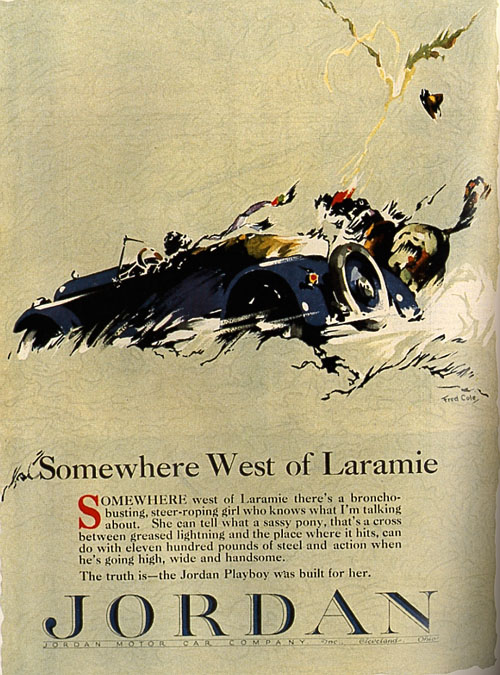And with his death, it truly seemed that an era had really passed.
Gen. Frederick Funston, next to driver, in 1906.
Funston was born in Ohio in 1865 and in some ways did not show early promise in life. He was a very small and slight (at first) man, standing only 5'5" and weighing only 120 lbs upon reaching adulthood. He aspired as a youth to the military, after growing up in Kansas, but he was rejected by West Point due to his small size. He thereafter attended the University of Kansas for three years but did not graduate. Following that he worked for awhile for the Santa Fe Railroad before becoming a reporter in Kansas City in 1890.
Only after a year he left reporting and went to work for the Department of Agriculture as a researcher in an era when that was an adventuresome occupation. In 1896, however, Funston left that to join the Cuban insurrection against Spain in Cuba.
Funston as a Cuban guerilla.
As most Americans spending any time in Cuba at the time experienced, he came down with malaria while serving the Cuban revolution. Returning to United States weighing only 95 lbs he found himself back in the United States just in time to secure a commission with the 20th Kansas Infantry as it was raised to fight in the Spanish American War.
"Funston's Fighting Kansans" in the Philippines.
The 20th Kansas didn't fight in Cuba, it fought in the Philippines. Funston served there heroically and received the Medal of Honor, and found himself promoted to the rank of Brigadier General in the Regular Army at age 35, a remarkable rise contrary to the usual story of military advancement and more reminiscent of the Civil War than anything thereafter. Following his service in the Philippines, however, he fell into a period of controversy due to aggressively pro military action comments he made in the United States.
He was stationed at the Presidio in San Francisco upon his return to the United States and was there at the time of the 1906 earthquake. He controversially declared martial law to attempt to combat the fire and looters and in fact authorized the shooting of looters. Following that he was stationed again in the Philippines and Hawaii. In 1914 he was placed in command of the Southern Department of the Army and was in command of the US forces in Vera Cruz and thereafter in Mexico under Pershing.
On this date in 1917 he was relaxing at the St. Anthony Hotel in San Antonio Texas when he suffered a massive stroke and died. He was only 51 years of age but he had put on a tremendous amount of weight in recent years. Indeed, his weight had prevented him from active field service by the time of the Punitive Expedition, but the fact of his death in this fashion would suggest an undiagnosed high blood pressure condition, something that was commonly fatal in that era.
Two Battalions of the Wyoming Infantry were to be on their way home, the Boomerang reported.
And Theodore Roosevelt was planning to reprise his Spanish American War role if the US went to war with Germany. Well. . . .Woodrow Wilson might have a say in that.
And the situation in Mexico was apparently getting complicated by a private body of cowboy militia crossing the border in reprisal for the recent death of their fellows.
Finally, the Boomerang reported the situation with Germany as "hopeful".
News came on this Monday (in 1917) that indeed, Wyoming and Colorado state troops were headed home, or at least to Ft. D. A. Russell.
A general with a Cheyenne connection, John J. Pershing, now a national hero and the recent commander of the Punitive Expedition, came out for universal military training. That was big movement, of course, at the time.
And John B. Kendrick was on his way to the U.S. Senate, finishing up his time as Governor by signing the bills that had passed the recent legislative session.
Miss Elanor Eakin Carr's engagement to Howard P. Okie, son of J. B. Okie of Lost Cabin, the legendary sheepman of the Lost Cabin area. He'd take over his father's mercantile interest that year, but the marriage would not be a long one. He died in 1920.
Today In Wyoming's History: February 19: 1917 The State Highway Commission was created by the signature of the Governor Kendrick, in his last day in office, approving it.
It's odd to think of Wyoming lacking a Highway Department but up until this date in 1917, it did. That was common at the time as most vehicular transportation remained strictly local. However, that would begin to change with the Federal Aid Road Act of 1916, which provided funds, for the first time, to state highway departments in one of the "progressive" policies of the Wilson Administration.
The activities of the Commission would be modest but growing throughout its early years. Limited winter plowing commenced in 1923 and then it began in earnest in 1929. In 1991 the highway department became the Wyoming Department of Transportation, which it remains.

Last prior edition:
























